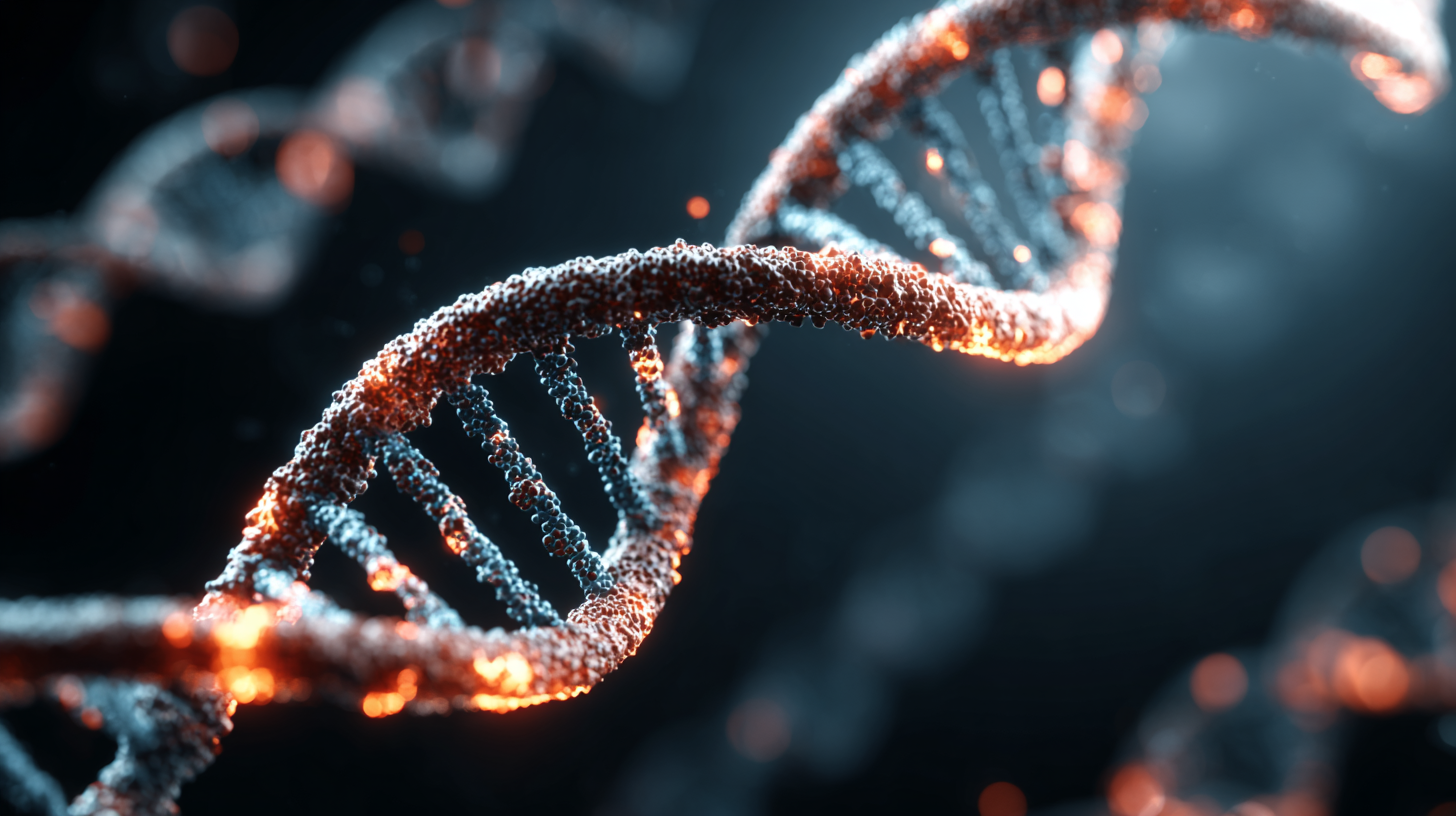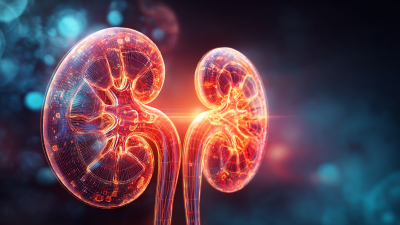Leave Your Message
The upcoming 138th Canton Fair in 2025 presents a unique opportunity to delve into the groundbreaking potential of Nitroxoline in cancer therapy. As researchers and industry leaders gather to share insights and innovations, the focus on Nitroxoline—a compound traditionally used in antibiotic treatments—will highlight its promising applications in oncological care. Recent studies suggest that Nitroxoline could offer a new avenue for cancer treatment by enhancing the efficacy of existing therapies and potentially reducing tumor growth. This exploration not only underscores the significance of repurposing existing drugs in addressing complex diseases like cancer but also emphasizes collaborative efforts within the medical community to expand treatment modalities. The fair will serve as a platform for exchanging findings, fostering partnerships, and propelling the conversation about integrating Nitroxoline in cancer therapy, ultimately aiming towards improved patient outcomes and a deeper understanding of its role in oncology.

Nitroxoline, originally utilized as an anti-infective agent, is garnering attention for its potential application in cancer therapy. Recent studies suggest that Nitroxoline may exert its anticancer effects through multiple mechanisms. One prominent pathway involves the chelation of metal ions, which are crucial for various cellular processes. By binding to these ions, Nitroxoline may disrupt the function of metalloenzymes, leading to impaired tumor growth and proliferation. A comprehensive analysis by the National Cancer Institute has noted that targeting metal ion homeostasis is a promising approach in oncology, particularly for forms of cancer resistant to conventional treatments.
Furthermore, Nitroxoline could impact cancer cell metabolism. Research published in Cancer Research indicates that alterations in mitochondrial dynamics can significantly affect tumorigenesis. Nitroxoline has been shown to induce mitochondrial dysfunction, leading to increased oxidative stress within cancer cells. Such conditions may promote apoptosis, particularly in aggressive cancer types. According to a report from the Global Cancer Observatory, the need for innovative therapeutic strategies is critical, given that cancer incidence continues to rise globally, with an estimated 22 million new cases by 2030. The exploration of Nitroxoline as a therapeutic agent showcases the evolving landscape of cancer treatment, highlighting the potential for repurposing existing drugs to address this urgent health challenge.

Recent studies have brought attention to Nitroxoline, a pharmaceutical compound traditionally used as an antibacterial agent, for its potential applications in oncology. This year at the 138th Canton Fair, researchers are set to present compelling data on Nitroxoline’s ability to inhibit tumor growth and reduce metastasis in various cancer models. Preliminary clinical trials suggest that Nitroxoline may interfere with critical cellular pathways involved in cancer proliferation, offering promising prospects for its use as an adjunct therapy in established cancer treatments.
Additionally, the analysis of Nitroxoline's impact on tumor microenvironments demonstrates its role in modulating immune responses that are crucial in combating metastatic spread. By enhancing the body’s innate immune activity, Nitroxoline may systematically reduce the likelihood of cancer cells disseminating to distant sites. The findings presented are poised to open new avenues for combining traditional cancer therapies with novel agents like Nitroxoline, aiming to improve patient outcomes and tailor treatments to specific cancer types.
The integration of Nitroxoline in multimodal cancer treatment strategies presents a promising advancement in oncology. Nitroxoline, an established anti-microbial agent, has garnered attention for its potential cytotoxic effects on cancer cells. Recent studies indicate that this compound can enhance the efficacy of traditional chemotherapeutic agents when used in combination therapies. According to a report by the World Health Organization, over 19 million new cancer cases were diagnosed globally in 2020, highlighting the urgent need for innovative treatment approaches. By incorporating Nitroxoline into existing protocols, we may be able to tackle the challenges of drug resistance that frequently complicate therapy.
Furthermore, data from the European Journal of Cancer suggest that combination therapies leveraging Nitroxoline can reduce tumor growth rates more effectively than monotherapies alone. When paired with immunotherapy and radiation, Nitroxoline has shown the potential to improve patient outcomes by modulating the tumor microenvironment, thereby enhancing immune response. As the 138th Canton Fair in 2025 approaches, the discussions around Nitroxoline's integration into cancer treatment will likely pave the way for new protocols that could redefine therapeutic strategies in oncology. This collaborative approach underscores the importance of continuous innovation to address the multifaceted nature of cancer.
| Dimension | Description | Potential Impact |
|---|---|---|
| Mechanism of Action | Nitroxoline is believed to inhibit DNA repair mechanisms in cancer cells. | Increased sensitivity of cancer cells to chemotherapy. |
| Combination Therapies | Used alongside traditional chemotherapeutics and targeted therapies. | Enhances overall treatment efficacy. |
| Clinical Trials | Ongoing studies evaluating safety and efficacy in specific cancer types. | Proof of concept for further research and development. |
| Side Effects | Generally well tolerated, with some gastrointestinal issues reported. | Low adverse effect profile compared to other chemotherapies. |
| Current Research Focus | Investigating synergistic effects with immunotherapy. | Potential to improve patient outcomes in advanced cancer stages. |
The regulatory landscape for Nitroxoline in cancer therapy is evolving, as research continues to unveil its therapeutic potential. While traditionally known as an antimicrobial agent, recent studies suggest that Nitroxoline may also play a role in inhibiting cancer cell proliferation and enhancing the efficacy of existing treatments. This growing body of evidence has prompted a reevaluation of Nitroxoline’s applications within regulatory frameworks, paving the way for potential clinical trials and approvals geared toward oncology.
Market opportunities for Nitroxoline in cancer therapy are expanding, particularly in regions where existing cancer treatments are limited or lack efficacy. As healthcare systems increasingly prioritize innovative and cost-effective therapies, the demand for repurposed drugs like Nitroxoline is gaining traction. The 138th Canton Fair 2025 serves as an ideal platform to showcase these advancements, attracting pharmaceutical companies, investors, and healthcare professionals interested in exploring collaborative pathways for introducing Nitroxoline into clinical practice. This convergence of regulatory alignment and market interest ultimately promises to enhance patient care in oncology.

Recent clinical trials have illuminated the potential of nitroxoline as a repurposed candidate in oncology, particularly in the context of pancreatic cancer. Research indicates that nitroxoline exhibits dose-dependent antiproliferative activity against AsPC-1 cells, a significant finding considering the urgent need for novel treatments in this aggressive cancer type. The selective inhibition mechanism of nitroxoline targeting the bromodomain and extra-terminal domain (BET) family of proteins presents a promising avenue for therapeutic intervention, given the role these proteins play in regulating various oncogenic pathways.
Incorporating insights from integrative proteomic and functional analyses, nitroxoline's dual role as a metal-chelating agent further bridges the gap between infectious diseases and cancer therapy. This multifaceted approach could yield compounded benefits, making nitroxoline a versatile candidate as we explore innovative strategies in cancer care.
Tips: When considering repurposed drugs like nitroxoline, it's crucial to analyze existing clinical data rigorously. Understanding the mechanisms of action can unveil new therapeutic potentials, guiding researchers toward optimizing treatment protocols. Additionally, continuous monitoring of patient responses in clinical trials can lead to more personalized treatment strategies, enhancing overall efficacy in cancer therapy.






